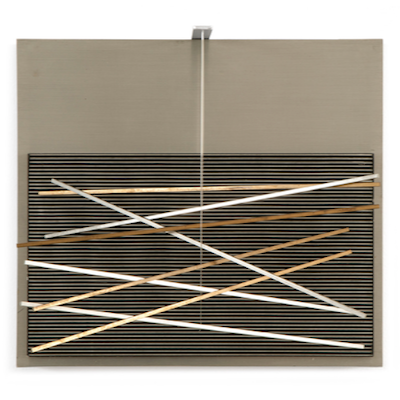Alexander Calder
Alexander Calder
Original Signed Artworks & Limited Edition Prints For Sale
Alexander Calder
Alexander Calder
- Recently Added
- Price (Low-High)
- Price (High-Low)
- Year (Low-High)
- Year (High-Low)
Alexander Calder
Pyramids & Spirales De Couleurs, 1974
Limited Edition Print
Lithograph
Inquire For Price
Alexander Calder
Circles (Black, Red And Blue), 1967
Limited Edition Print
Lithograph
Inquire For Price
Alexander Calder
Our Unfinished Revolution: Animals, 1975-1976
Limited Edition Print
Lithograph
USD 14,400
Alexander Calder
Taches De Rousser (from La Memoire Elementaire), 1976
Limited Edition Print
Lithograph
USD 11,900
Alexander Calder
Plaisir Du Néophyte (from La Memoire Elementaire, 1976), 1976
Limited Edition Print
Lithograph
USD 11,900
Alexander Calder
Le Point De Non Retour (from La Memoire Elementaire), 1976
Limited Edition Print
Lithograph
USD 11,900
Alexander Calder
Le Piège (from La Memoire Elementaire), 1976
Limited Edition Print
Lithograph
USD 11,900
Alexander Calder
La Pointe Du Progrès (from La Memoire Elementaire), 1976
Limited Edition Print
Lithograph
USD 11,900
Alexander Calder
Our Unfinished Revolution: Octopus/Squid, 1975-1976
Limited Edition Print
Lithograph
USD 14,400
Alexander Calder
Untitled (from The La Memoire Elementaire Portfolio), 1976
Limited Edition Print
Lithograph
USD 5,500
Alexander Calder
Red Sphere On Yellow Ground, 1970
Limited Edition Print
Lithograph
USD 12,000 - 15,000
Alexander Calder
Devil (portrait If Constantin Tacou), 1975
Limited Edition Print
Etching And Aquatint
USD 2,950
Sell an artwork by Alexander Calder
Do you own an artwork by Alexander Calder that you wish to part with? We invite you to send us the details. We are continually seeking to acquire exceptional pieces for our collection.
Do you own an artwork by Alexander Calder that you wish to part with? We invite you to send us the details. We are continually seeking to acquire exceptional pieces for our collection.
Offer Us Your Artwork
What is kinetic art?
International movement referring to both apparent and real motion of art created in the 1920s and 1960s. It is explained as art emerging from any medium containing some movement that depends on motion for effect or can be perceived by the viewer. Canvas paintings are some of the notable and earliest examples of this art type. Speaking pertinently, kinetic art today refers to 3 dimensional figures and sculptures such as those operated by machines or those that move naturally. It encompasses a variety of styles and techniques that overlap.




























































